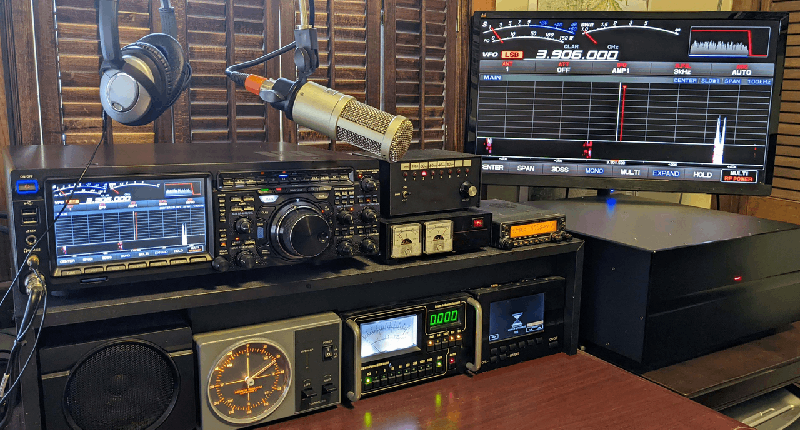As technology advances and the world of amateur radio continues to evolve, experienced ham radio operators are constantly seeking ways to improve their communication capabilities. One area where significant advancements have been made is in antenna design. Advanced antenna designs offer enhanced performance, increased efficiency, and greater flexibility, allowing operators to push the boundaries of their radio communication. In this article, we’ll explore some of the most innovative and cutting-edge antenna designs that experienced ham radio operators can consider incorporating into their setups.
1. Steerable Antennas
Steerable antennas, also known as directional antennas, are designed to be adjustable, allowing operators to change the directionality of the antenna’s beam pattern. This capability is invaluable for operators who need to focus their transmission or reception in a specific direction, such as during contests, DXing (long-distance communication), or direction finding. Steerable antennas can be manually adjusted or automated using motorized rotators, offering precise control over beam direction.
2. Phased Array Antennas

Phased array antennas consist of multiple antenna elements arranged in a specific geometric configuration. By controlling the phase and amplitude of each element individually, operators can manipulate the direction and shape of the antenna’s radiation pattern. Phased array antennas offer several advantages, including beam steering without physical movement, improved signal strength and clarity, and reduced interference from unwanted directions. While more complex to design and implement, phased array antennas provide unmatched flexibility and performance for experienced operators.
3. Log-Periodic Antennas
Log-periodic antennas are multi-band antennas that offer consistent performance across a wide frequency range. Unlike traditional antennas, which are tuned to specific frequencies, log-periodic antennas maintain a relatively constant impedance and radiation pattern across multiple bands. This versatility makes them ideal for operators who need to communicate on various frequency bands without switching antennas. Log-periodic antennas are commonly used in applications where frequency agility and broadband coverage are essential, such as emergency communication and monitoring.
4. Magnetic Loop Antennas
Magnetic loop antennas are compact, high-efficiency antennas that operate on the principle of magnetic resonance. These antennas consist of a loop of wire or tubing with a variable capacitor for tuning. Magnetic loop antennas offer several advantages, including small size, low noise, and excellent rejection of unwanted signals. They are particularly well-suited for use in confined spaces or urban environments where traditional antennas may not be practical. Magnetic loop antennas are popular among QRP (low-power) operators and portable enthusiasts due to their portability and efficiency.
5. Circularly Polarized Antennas
Circularly polarized antennas emit radio waves with a rotating electric field, rather than a linearly polarized field. This polarization technique offers several benefits, including reduced signal fading, improved signal strength, and better resistance to multipath interference. Circularly polarized antennas are commonly used in satellite communication, EME (Earth-Moon-Earth) communication, and mobile radio applications. While more complex to design and construct, circularly polarized antennas can significantly improve communication reliability, especially in challenging environments.
6. Software-Defined Antennas
Software-defined antennas (SDAs) are a revolutionary concept that combines software-defined radio (SDR) technology with adaptive antenna arrays. SDAs dynamically adjust their radiation pattern and characteristics in real-time based on environmental conditions, user preferences, and signal requirements. This adaptability allows SDAs to optimize performance for specific communication tasks, such as maximizing signal strength, minimizing interference, or focusing transmission/reception in a particular direction. While still in the early stages of development, SDAs hold great promise for the future of ham radio by offering unprecedented flexibility and adaptability.

7. Mesh Network Antennas
Mesh network antennas are designed to facilitate communication within a mesh network, where multiple nodes (radios) communicate with each other to relay data. These antennas are typically omnidirectional or semi-directional and are optimized for robust, decentralized communication over a wide area. Mesh network antennas are commonly used in emergency communication, disaster response, and community networking applications. By deploying mesh network antennas, experienced ham radio operators can create resilient communication networks that are less reliant on centralized infrastructure.
Advanced antenna designs offer experienced ham radio operators a wide range of options for improving their communication capabilities. Whether you’re looking to enhance directional control, increase bandwidth coverage, reduce interference, or experiment with new technologies, there’s an advanced antenna design to suit your needs. By staying informed about the latest developments in antenna technology and exploring innovative design concepts, experienced operators can take their radio communication to new heights. As the world of ham radio continues to evolve, advanced antennas will play a crucial role in shaping the future of amateur radio communication.

